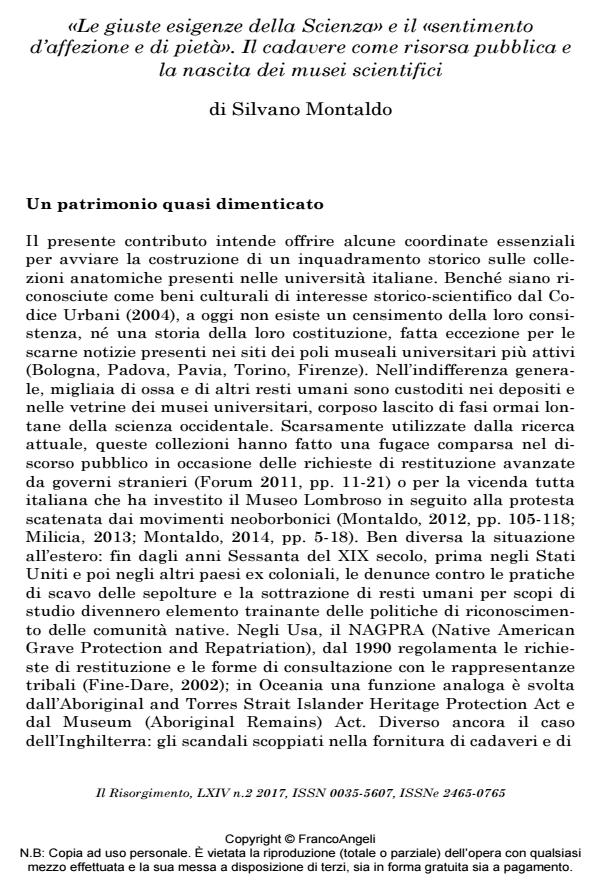«The right needs of Science» and the «the feeling of affection and pity». The dead boy as public resource and the origins of the scientific museums
Journal title IL RISORGIMENTO
Author/s Silvano Montaldo
Publishing Year 2018 Issue 2017/2
Language Italian Pages 24 P. 85-108 File size 193 KB
DOI 10.3280/RISO2017-002003
DOI is like a bar code for intellectual property: to have more infomation
click here
Below, you can see the article first page
If you want to buy this article in PDF format, you can do it, following the instructions to buy download credits

FrancoAngeli is member of Publishers International Linking Association, Inc (PILA), a not-for-profit association which run the CrossRef service enabling links to and from online scholarly content.
Despite the fact that Italy was the birthplace of Renaissance scientific anatomy, its division into several states did not favour the modernisation of regulations on the handling of corpses that occurred in other countries during the eighteenth and nineteenth centuries. The inadequacy of existing norms, often based on basic agreements between citizens, therefore did not emerge until after unification, with the expansion of medical studies and the establishment of principles of hygiene. This essay traces the cultural and political circumstances of the 1880s that led to the introduction of state legislation able to ensure the availability of enough bodies (almost always those of the poorest sections of the population) to meet the demand from scientific research and medical studies, and it also looks at the new municipal hygiene regulations that covered every aspect of the treatment of dead bodies in order to ease popular anxieties about the new legislation. Those years saw the establishment of the great anatomical collections of the Italian universities, which in some cases, such as that of Turin, were also used to exhibit the supposed racial characteristics of the Italian population.
Keywords: Anatomy, Nineteenth Century, Dead body Università degli Studi di Torino silvano.montaldo@unito.it
- Célébrer Cesare Lombroso (1906-1909) Silvano Montaldo, Sylvie Pipari, in Revue d'histoire des sciences humaines /2020 pp.63
DOI: 10.4000/rhsh.4606
Silvano Montaldo, «Le giuste esigenze della Scienza» e il «sentimento d’affezione e di pietà». Il cadavere come risorsa pubblica e la nascita dei musei scientifici in "IL RISORGIMENTO" 2/2017, pp 85-108, DOI: 10.3280/RISO2017-002003